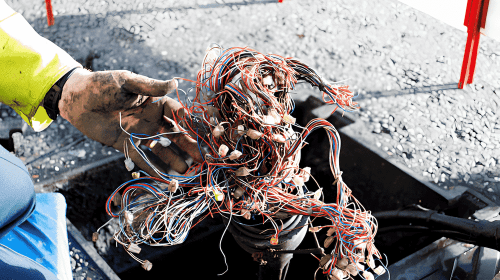Blazing Trails to the Stars with Mobile Technology
Dec 25, 2023
Major smartphone developers Samsung, Apple, and Huawei are locked in a high-stakes battle to be the first to provide reliable 5G connectivity from space to devices in even the most remote locations on Earth.
As smartphones become ubiquitous worldwide, users increasingly expect to remain connected no matter where they are. However, connecting smartphones via cellular towers leaves gaps in places like rural areas, oceans, and airplanes. Space-based 5G connectivity promises to bridge these gaps and give users a more stable connection.
Realizing this immense opportunity, smartphone giants are channeling R&D efforts into satellite communication capabilities. While still a nascent field, early signs indicate fierce competition ahead as companies vie to tap the potentially massive space-to-smartphone connectivity market.
Samsung Pushes Boundaries with Satellite Connectivity
Samsung made waves by signing a deal with satellite operator Iridium in early 2023 to bring satellite connectivity to the Samsung Galaxy S23 smartphone series. Though initially limited to text-based messaging, the partnership underscores Samsung’s seriousness about space-based communication.
 Samsung Galaxy S23 Promo. Credit: Samsung
Samsung Galaxy S23 Promo. Credit: Samsung
Samsung executive TM Roh stated that satellite connectivity in smartphones opens up “powerful mobility solutions” when beyond typical network coverage areas. Samsung’s early move into space-to-smartphone technology indicates they aim to lead innovation rather than follow Apple. Given Samsung’s engineering prowess and vast resources, they are well-positioned to set the pace.
Apple: Emergency Capabilities Ahead of Connectivity Offering
Though Samsung beat them to announcing satellite connectivity, secrecy shrouds Apple’s plans. Rumors suggest the iPhone 16 may feature direct satellite communication capabilities. In the meantime, Apple has integrated satellite emergency features like emergency SOS texting into iPhone 14 models.
 Apple iPhone 16 unofficial concept by 3D artist. Credit: DNA India
Apple iPhone 16 unofficial concept by 3D artist. Credit: DNA India
While emergency use cases make sense initially, Apple’s ambition undoubtedly lies in bringing connectivity to the next billion iPhone users outside traditional network reach. Given Apple’s track record of innovating in domains like smartphone cameras and processors, few would bet against them eventually conquering satellite connectivity too. Whether they can keep up with Samsung’s brisk pace remains to be seen.
Facing Restrictions, Huawei Forges Its Own Path
Despite encountering notable obstacles in its supply chain, Huawei is showing a strong resolve to create its own 5G chipsets. Although specific information is limited, there is considerable anticipation surrounding the upcoming Mate 70 Pro, which is rumored to include a Huawei-manufactured 5G chip that boasts satellite communication capabilities similar to its predecessor, the Mate 60 Pro. If true, this would represent a major achievement given trade restrictions limiting Huawei’s access to foreign semiconductor tech.
 Huawei Mate 70 Pro concept. Credit: thegioididong
Huawei Mate 70 Pro concept. Credit: thegioididong
Huawei is also collaborating with Chinese chipmaker SMIC to manufacture 7nm 5G mobile chipsets. Though not as advanced as market leader TSMC’s chips, this demonstrates the lengths Huawei will go to deliver 5G smartphones. Analysts say Huawei’s motivations are both technical and patriotic. By owning more of the supply chain, Huawei not only overcomes trade barriers but also helps the Chinese industry.
High Stakes in the Race to Connect Humanity
Given the ballooning demand for mobile devices globally, there are immense strategic and economic incentives for companies that nail satellite connectivity at scale. With billions of potential customers worldwide still lacking reliable broadband, whichever company succeeds first stands to capture substantial value.
However, the engineering obstacles to space-based 5G connectivity on smartphones remain immense. From antenna design and power efficiency to latency and deployment costs, myriad complex challenges await viable solutions. Still, as smartphone industry leaders such as Apple, Samsung, and Huawei continue to invest significant funds and resources in satellite connectivity, the majority of industry experts now consider it an unavoidable reality. It is widely believed that humanity is progressing towards becoming a species interconnected across multiple orbits, following an unstoppable trajectory.





